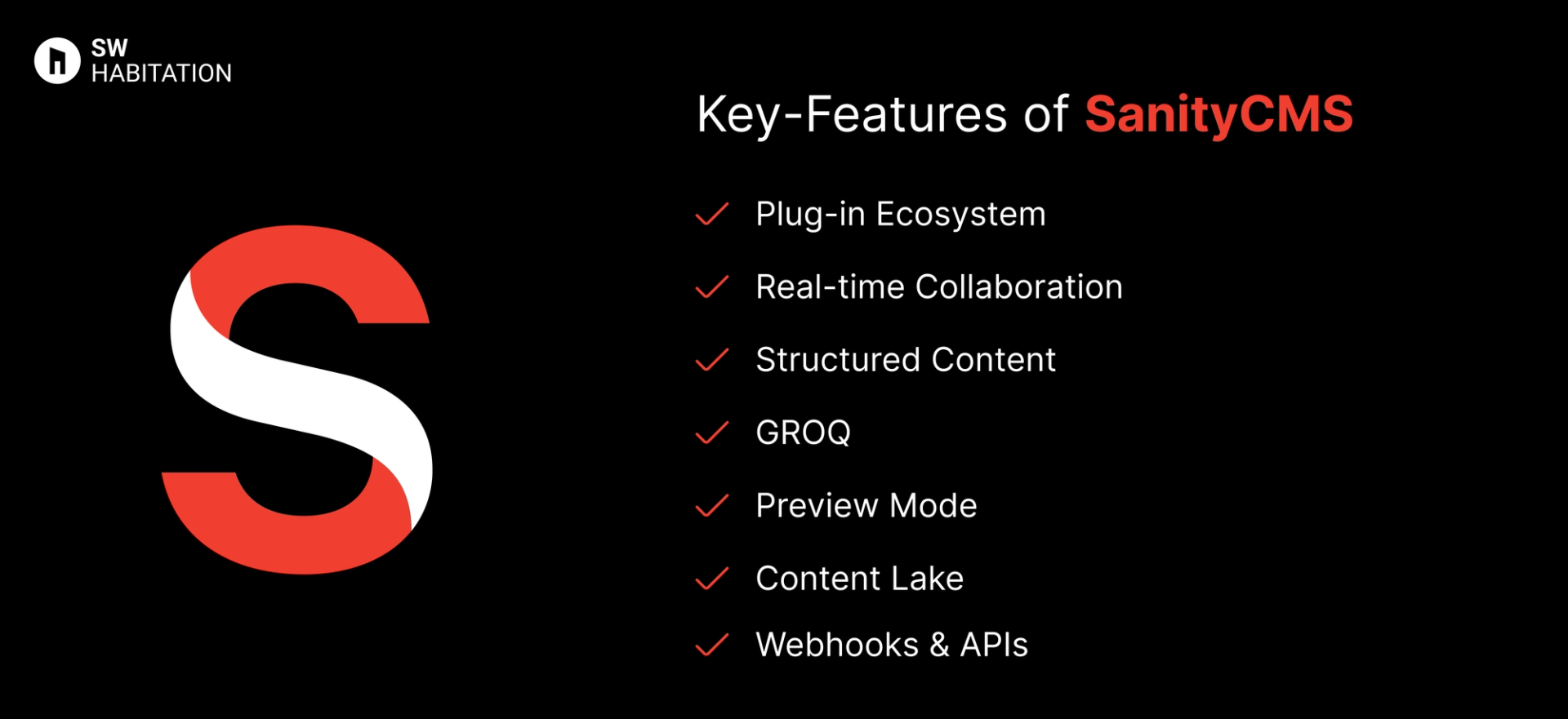Sanity vs. DatoCMS

Sanity

DatoCMS
You know, when you wanna make a website or a blog but don’t wanna mess with too much code? That’s where a CMS (Content Management System) comes in. It’s like a super easy tool that helps you add text, pictures, and videos to your site without needing to be a tech genius. You just log in, click a few buttons, and your content is live. It's quite simple, right?
What is Sanity CMS ?
Sanity is a real-time, headless content platform that offers a customizable content studio (Sanity Studio) and flexible API access. It is known for its structured content modeling and developer-first experience.
Key Features of Sanity CMS ?


- Plug-in Ecosystem : Extend Studio with community and custom plugins.
- Real-time Collaboration: Multiple editors can work together live.
- Structured Content: Flexible schemas allow deeply nested, rich content types.
- GROQ: Sanity's powerful custom query language.
- Preview Mode: Live preview content with your frontend in real-time.
- Content Lake: Sanity’s globally distributed real-time content backend.
- Webhooks & APIs: Easily integrates with static site generators and webhooks.
Advantages of Sanity CMS
- Headless Freedom: It can be used with any frontend or framework.
- Real-Time Editing: Ideal for collaborative workflows.
- Scalable Content: Handles complex data relationships and large-scale content.
- Great Developer Tooling: Excellent CLI, schema modeling, and APIs.
- Highly Customizable Studio: Designed the UI to your brand/editor needs.
Disadvantages of Sanity CMS
- Learning Curve for GROQ: GROQ is powerful but unfamiliar to most developers.
- No Native Image Hosting: it relies on integrations or external hosting for advanced media workflows.
- Requires Developer Setup: Initial setup and schema modeling may be overwhelming.
- Pricing: It an get expensive at scale or with advanced usage.
What is DatoCMS?
DatoCMS is a headless CMS built to manage content and deliver it across websites, mobile apps, and beyond. It gives developers the flexibility to work with their favorite front-end frameworks while providing content creators with a clean, intuitive interface.
Whether you’re building a personal blog or handling a massive e-commerce website, DatoCMS simplified the process by providing a simple dashboard and robust API for content delivery.
Key Features of DatoCMS


- Roles and Permissions: Manage team access with fine-grained control.
- Integrations: Works well with Next.js, Gatsby, and other static site generators.
- Localization: Built-in support for multi-language content.
- Real-Time Updates: Content changes reflect instantly across all platforms.
- Headless Architecture: Deliver content anywhere using GraphQL or REST APIs.
- Media Library: Manage images, videos, and files with ease.
- Content Modeling: Design content structures that fit your project needs.
Advantages of Datocms
- Great for JAMstack: Integrates seamlessly with modern web technologies.
- User-Friendly: Clean UI for content editors — no technical knowledge required.
- Simple Setup: Get started quickly with minimal configuration.
- Scalable: Handles projects of all sizes, from small blogs to large applications.
- GraphQL Support: Fetch exactly the data you need with powerful queries.
Disadvantages of Datocms
- Learning Curve: GraphQL is powerful but requires some learning if you’re new to it.
- Paid Plans for Advanced Features: Features like advanced roles and high traffic require a paid plan.
- Limited Free Plan: The free tier has restrictions.
Comparison Between Sanity vs DatoCMS
Use Cases of Sanity
- Jamstack-powered Apps: Integrates seamlessly with static site generators and frontend frameworks for fast, secure apps.
- Content-rich websites : It is Ideal for managing structured, scalable content across marketing sites, blogs, and documentation.
- Editorial Platforms: Enables real-time collaboration, custom workflows, and structured content for publishing teams.
- Headless eCommerce: Powers product content, editorial storytelling, and localization for modern eCommerce platforms.
Use Cases of DatoCMS
- Teams with Editors and Developers: Editors get a clean UI, while developers enjoy the flexibility of GraphQL.
- JAMstack Lovers: Works seamlessly with static site generators like Next.js and Gatsby.
- Multi-Language Projects: Built-in localization makes managing translations easy.
- Content-Heavy Websites: Ideal for blogs, e-commerce, and marketing sites.
Other Resources
Conclusion
Headless CMS platforms make managing your website very simple and easy. Whether you’re running a blog, online store, or business, they handle the tough stuff so you can focus on your content.
With a user-friendly interface and the ability to work with any technology, you can create a site that really fits your needs.
These platforms are flexible, secure, and can grow with you. They offer features like custom content, easy editing, and integrations with other tools. Choose the one that fits your requirements and start building your dream website today 🚀
Frequently asked questions
Is Sanity open-source?
Sanity Studio is open-source, the backend (Content Lake) is managed and proprietary.
What makes Sanity different from other headless CMS?
Real-time editing, schema customization, and GROQ querying offer extreme flexibility and control.
Can I self-host Sanity?
No, Content Lake is only available as a managed service, but Sanity Studio can be self-hosted.
Is DatoCMS good for editors?
Yes, DatoCMS has an intuitive, user-friendly admin interface that’s designed for content editors. It’s easy to add, update, and manage content without needing to touch code.
Is DatoCMS free to start?
DatoCMS has a free tier for small projects. It’s great for personal or small business sites, offering a manageable amount of content and API calls before you need to upgrade.
Does DatoCMS have image optimization?
Yes, DatoCMS provides powerful image optimization tools right out of the box. You can resize, crop, and optimize images for faster performance and better user experience.
What frontend can I use with DatoCMS?
DatoCMS is frontend-agnostic, so you can use any framework or static site generator you prefer—React, Next.js, Gatsby, Vue, or even plain HTML. It's flexible to meet the needs of any project.
